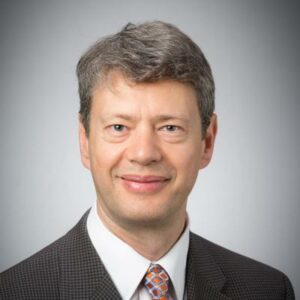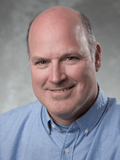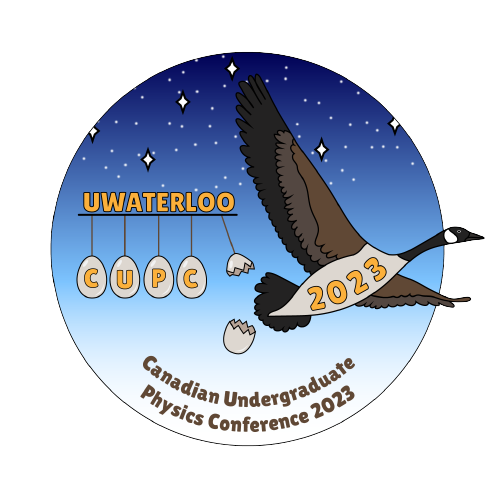This panel will take place on Friday October 28th from 13:00 – 14:30. The student moderator for this panel is Gault Bruch – please email us if you have questions you are interested in having the panellists discuss!
Synchrotron science has increasingly expanded into other scientific fields as a new tool of high resolution study. Despite the advances within the field and the usefulness of the technique, often students are left without a strong understanding of the field as they leave their undergraduate degree. This, in turn, makes it hard for students to take work opportunities within these prominent research facilities. As these facilities are continuing to grow larger in the next generation, they present a unique and rare opportunity for current undergraduate students to build a successful career following an upward trajectory of new scientific discoveries.
This panel will focus on the science behind synchrotrons, as well as the possible career paths for students looking to be involved with synchrotron research. Furthermore, the career paths of the panelists, as well as their outlook on the next generation of synchrotron research, will be discussed.
Dr. Gianluigi Botton
 Dr. Gianluigi Botton (he/him) is the Science Director of the Canadian Light Source since 2019, as well as a Tier 1 Canadian Research Chair in Electron Microscopy of Nanoscale Materials. With both a Baccalaureate in engineering physics and Ph.D. in materials engineering from École Polytechnique de Montréal, he currently works at McMaster University as a professor in the Faculty of Engineering. Furthermore, Gianluigi established the Canadian Centre for Electron Microscopy, a national facility focused on high-resolution microscopy at McMaster. Gianluigi has received numerous national and international accolades for his work, both as a lecturer and researcher. His current research focuses on energy materials, semiconducting nanostructures, and nanophotonics.
Dr. Gianluigi Botton (he/him) is the Science Director of the Canadian Light Source since 2019, as well as a Tier 1 Canadian Research Chair in Electron Microscopy of Nanoscale Materials. With both a Baccalaureate in engineering physics and Ph.D. in materials engineering from École Polytechnique de Montréal, he currently works at McMaster University as a professor in the Faculty of Engineering. Furthermore, Gianluigi established the Canadian Centre for Electron Microscopy, a national facility focused on high-resolution microscopy at McMaster. Gianluigi has received numerous national and international accolades for his work, both as a lecturer and researcher. His current research focuses on energy materials, semiconducting nanostructures, and nanophotonics.
Dr. Stefan Kycia
 Dr. Stefan Kycia (he/him) is a professor at the University of Guelph and the PI of the Brockhouse Sector project at the Canadian Light Source. He specializes in solving materials science problems through the lens of synchrotron x-ray diffraction. Kycia earned his B.Sc. from McGill University, and his Ph.D. in Condensed Matter physics from Iowa State University before joining as staff scientist at Cornell High Energy Synchrotron Source. Kycia later served as the head of the x-ray diffraction group of the Brazilian Synchrotron Laboratory, LNLS where he lead the design, commissioning and implementation of three diffraction beamlines. Today, Kycia’s group continues to develop new, non-traditional
Dr. Stefan Kycia (he/him) is a professor at the University of Guelph and the PI of the Brockhouse Sector project at the Canadian Light Source. He specializes in solving materials science problems through the lens of synchrotron x-ray diffraction. Kycia earned his B.Sc. from McGill University, and his Ph.D. in Condensed Matter physics from Iowa State University before joining as staff scientist at Cornell High Energy Synchrotron Source. Kycia later served as the head of the x-ray diffraction group of the Brazilian Synchrotron Laboratory, LNLS where he lead the design, commissioning and implementation of three diffraction beamlines. Today, Kycia’s group continues to develop new, non-traditional methods of using synchrotron x-rays to study novel materials such as fullerenes, amorphous materials, nanoparticles, epitaxial thin films, quasicrystals, and quantum materials.
Dr. Beatriz Moreno
 Dr. Beatriz Moreno (she/her) is the scientist responsible for the Brockhouse sector beamlines at the Canadian Light Source. She obtained her undergraduate and masters in Havana, Cuba, before moving to Sao Paulo for a Ph.D. and post-doctoral fellowship at the National Institute for Space Research, doing material science research in the area of thin films and multilayers of semiconductors and magnetic materials. She then worked at the Brazilian Light Source diffraction beamlines, leading the XRD group. In 2012, she moved to Canada to help building the Brockhouse beamlines, currently operational, and now supports beamline operation and continuous improvements
Dr. Beatriz Moreno (she/her) is the scientist responsible for the Brockhouse sector beamlines at the Canadian Light Source. She obtained her undergraduate and masters in Havana, Cuba, before moving to Sao Paulo for a Ph.D. and post-doctoral fellowship at the National Institute for Space Research, doing material science research in the area of thin films and multilayers of semiconductors and magnetic materials. She then worked at the Brazilian Light Source diffraction beamlines, leading the XRD group. In 2012, she moved to Canada to help building the Brockhouse beamlines, currently operational, and now supports beamline operation and continuous improvements
